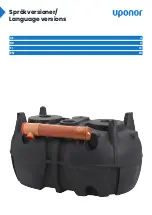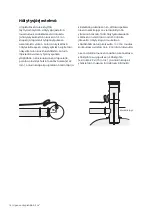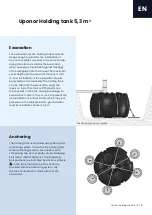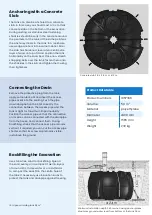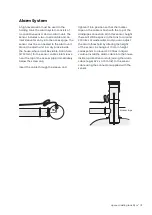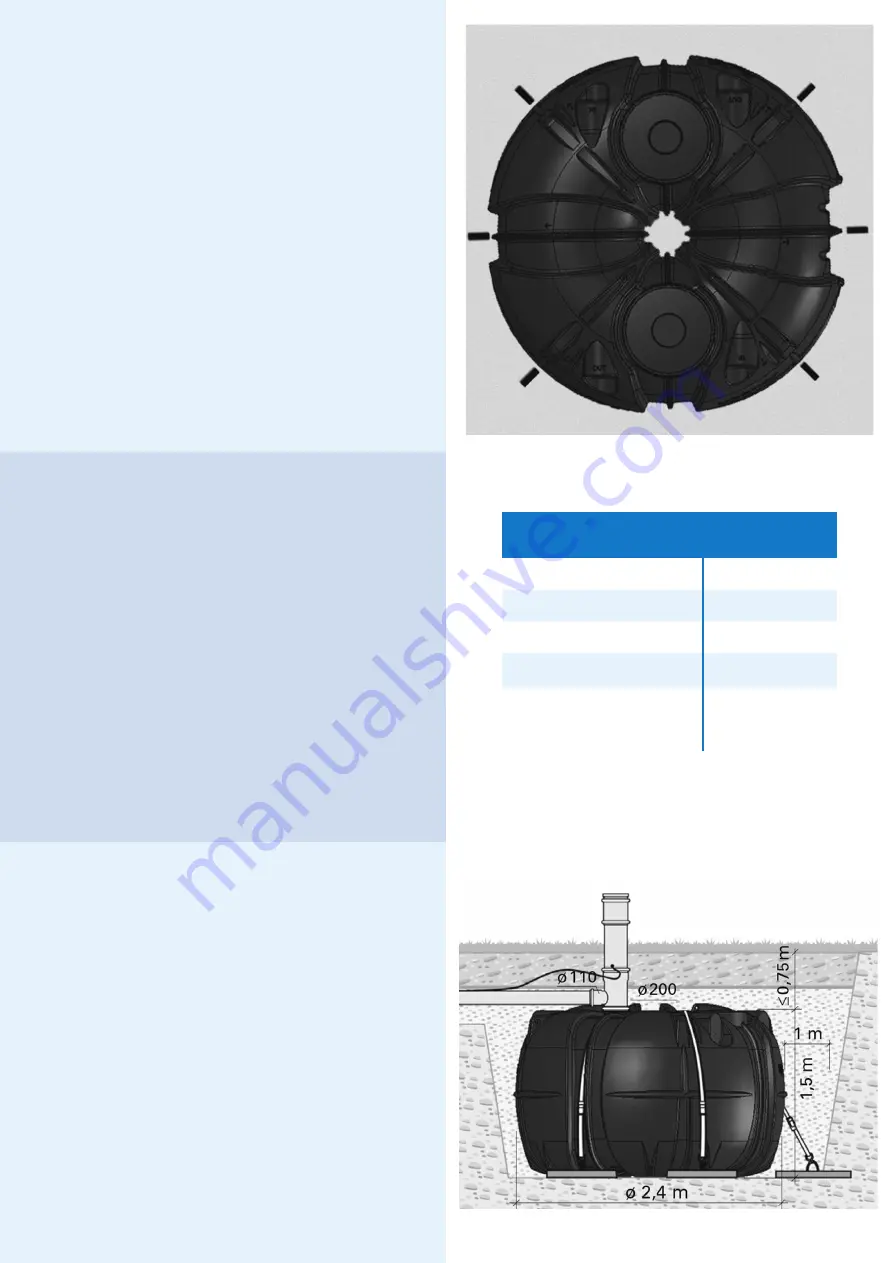
16 | Uponor gråvattenreningssystem
Connecting the Drain
Remove the protective plug from the tank,
apply some lubricant and insert the access
pipe socket into the sealing. Push the pipe
down and position the inlet correctly. The
connection between the access pipe and the
tank is tight for maximum impermeability.
Position the access pipe so that the connection
on its side can be connected with the drainpipe
from the house, and connect them. During
backfilling, check that the access pipe remains
vertical. If required, you can cut the access pipe
shorter so that its screw cap remains visible,
just above the ground.
Product Data table
Product numbers
1057366
Volume
5,3 m
3
Material
polyethylene
Diameter
2400 mm
Height
1565 mm
Weight
230 kg
Anchoring with a Concrete
Slab
The tank can also be anchored to a concrete
slab. In this case, you should cast a 10 cm thick
concrete slab on the bottom of the excavation.
During casting, six stainless steel fastening
shackles should be sunk in the concrete around
the perimeter of the tank, at the same points as
the anchor symbols in the tank. In a rock base,
use wedge anchors in the same manner. After
the slab has hardened, level a ten-centimetre
layer of sand on top of it and position the tank
horizontally on the sand bed. Place non-stretch
strapping belts over the tank; fasten them onto
the shackles in the slab, and tighten them using
their tighteners.
Concrete slab 2 ,8 x 2 ,8 m or Ø 3 m.
Backfilling the Excavation
Use stone-free sand for backfilling. Spread
the sand evenly, and compact it well in layers
of around 20 cm. Use water or a rod vibrator
to compact the backfill in the centre hole of
the tank. If necessary, use insulation slabs to
protect the tank and drainpipe against freezing.
Minimum installation depth 0.45m when using anchor plates.
Maximum ground water level from bottom of the tank 0,5 m.
16 | Uponor Holding tank 5,3 m
3


